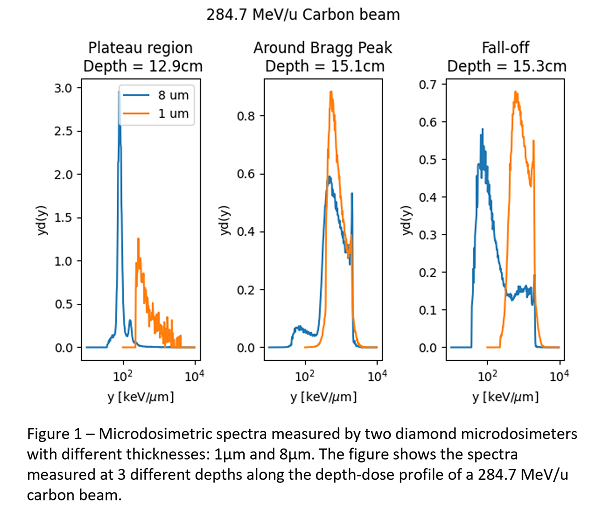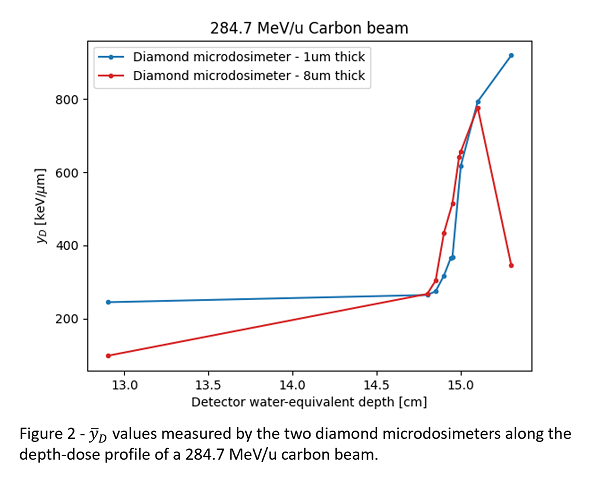Towards optimised characterisation of ion beam quality using microdosimeters of different thickness
OC-0771
Abstract
Towards optimised characterisation of ion beam quality using microdosimeters of different thickness
Authors: Gabriele Parisi1,2, Francesco Romano3, Giuseppe Schettino2
1University of Surrey, Physics, Guildford, United Kingdom; 2NPL - National Physical Laboratory, Radiation dosimetry, Teddington, United Kingdom; 3INFN - Istituto Nazionale di Fisica Nucleare, sezione di Catania, Catania, Italy
Show Affiliations
Hide Affiliations
Purpose or Objective
The interest in the application of microdosimetry to hadron therapy is growing fast thanks to promising experiments in clinical beams.
Microdosimetry is a dosimetry technique that measures the energy deposited by radiation into cell-like volumes, taking into account the stochastic nature of radiation interaction. Thus, the quality of the ion beam is uniquely characterised with high accuracy and spatial resolution. If used in clinical hadron therapy practice, microdosimetry could be an extremely valuable tool for quality assurance. Further, also the treatment effectiveness would benefit from microdosimetry since the RBE can be estimated through dedicated radiobiological models.
However, standard protocols and codes of practice, necessary for the clinical adoption of microdosimetry, are still missing.
The purpose of this work is the development of strong and reliable experimental microdosimetry methods to optimise the characterisation of hadron therapy beams.
Material and Methods
Two diamond microdosimeters, 1μm and 8μm thick, had been developed by University of Roma Tor Vergata, and were used to characterise a 287 MeV/u C-12 beam at MedAustron (Austria). The experiments were a first methodology study to explore the possibility to combine the response of detectors with different thickness, in order to optimise the characterisation of a therapeutic ion beam. To this purpose, a multi-thickness diamond microdosimeter (MTuD) has been developed with 3 sensitive volumes of different thickness (about 2, 6, and 12 µm) grown onto the same substrate. The thickest detector will allow to increase the sensitivity and, therefore, to characterise the entrance region, where the primary LET is the lowest. The thinnest detector will provide a better response around and beyond the Bragg Peak, where the primary LET is the highest and their range is the shortest. The third detector will eventually provide an optimised response in the plateau region towards the Bragg Peak.
Results
First encouraging results from the two diamond microdosimeters irradiated by a 287 MeV/u C-12 beam will be presented. The experiments showed the complementary limitations of using a thinner or a thicker detector alone (see Fig.1 and Fig.2), and hence the potential advantage of employing the MTuD. Further, the uncertainty in the relative position between the two detectors would be eliminated by the MTuD, whose sensitive volumes are all grown on the same substrate.


Conclusion
The results of the experiments carried out supported the development of a multi-thickness microdosimeter. The novel detector will allow an accurate characterisation of the beam quality along the whole depth-dose profile, using the optimal detector thickness for each region of the curve. Further, the detector will allow to carry out the first experimental study on the influence of the sensitive volume on the microdosimetric measurement.
The characterisation of the detector by means of IBIC analysis, and experiments in clinical proton and carbon beams are planned soon.